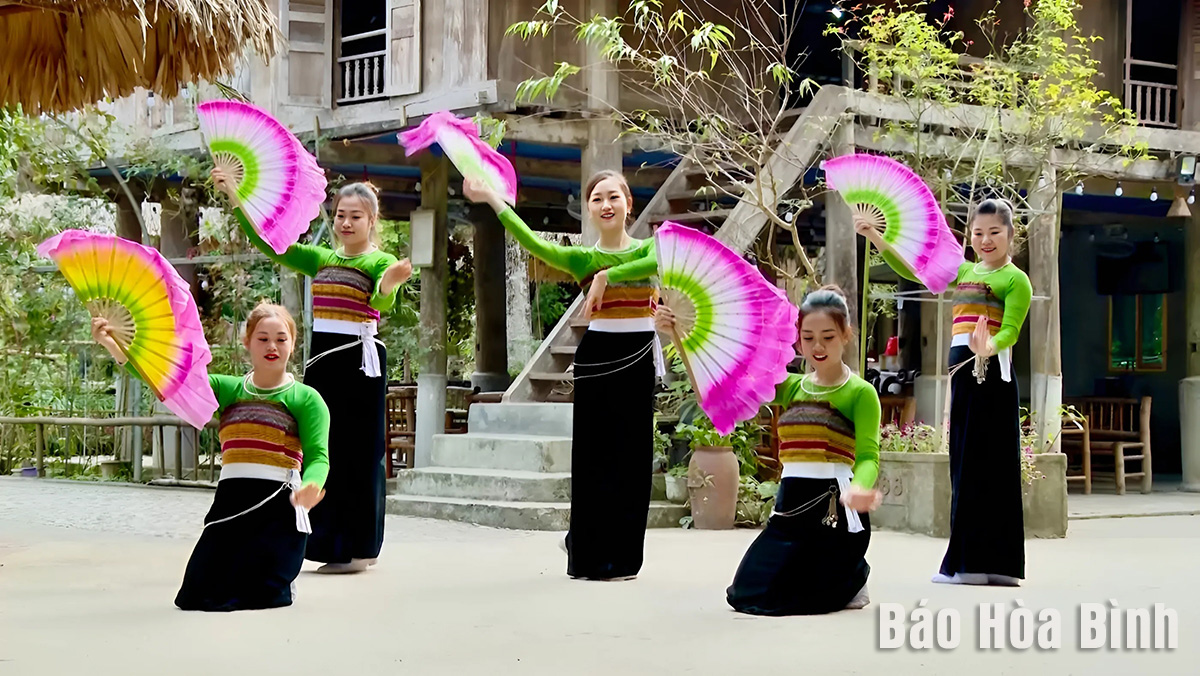Xoe dance, an unique art form of the Thai ethnic minority group in Mai Chau district of Hoa Binh province has existed for a long time and passed down through generations. Xoe dance is not only a popular dance in the Thai community but also a unique cultural feature, an indispensable part in the Thai ethnic minority people's cultural and spiritual life.
Thai people have folk songs as follows:
"Without Xoe, crops cannot grow well
Without Xoe, harvest will fail
Without Xoe, flowers will become withered
Without Xoe, boys and girls cannot fall into love with each other...”
For the Thai ethnic people, Xoe dance is believed to help them forget the fatigue of daily life and foster connection. It can be performed with bare hands or with a scarf or a fan. It’s not too difficult to learn so everyone can join in. The dance also demonstrates solidarity and equality, so it has sustainable vitality and is handed down from a generation to the other.
In addition to its cultural significance, Xoe dance in Mai Chau also attracts tourists at home and abroad for its beautiful and colorful costumes. The gentle and graceful dance moves in combination with music and charming costumes of Thai women create a unique art space.
Currently, there are about 10 Xoe dance troupes in community-based tourism villages in Mai Chau such as Lac village (Chieng Chau commune) and Pom Coọng (Mai Chau town). These troupes meet the cultural and spiritual needs of the local people who want to sing together and foster cohesion in the community. This cultural aspect is also optimised by the Thai ethnic people to develop tourism, forming a unique feature of Mai Chau tourism, thus attracting a large number of visitors, generating income for the community as well as contributing to the development of cultural, tourism and economic sector of the locality.
Xoe dance is often performed at major festivals and during the Tet (Lunar New Year) holidays. It offers an opportunity for the elderly, children and youths to exchange within the Thai ethnic community, creating a cheerful and cohesive atmosphere.
Ha Thi Minh Tam from Chieng Chau commune said that when she was a child, she was taught about the meaning and characteristics of Xoe dance.
Nowadays, Xoe dance of the Thai ethnic people in Mai Chau is also popularised on social networks, major festivals or art performances so that domestic and foreign tourists can have a better understanding and experience it as well. Xoe dance also helps young people in Mai Chau preserve and promote the nation's unique traditional culture, Tam said.
According to Ngan Van Tuan, Head of the district's Division of Culture and Information, about 60% of Mai Chau’s population are Thai ethnic people. It is necessary to incorporate activities related to the preservation of Xoe dance to tourism development, thereby enhancing the participation of community, he said, adding that this is essential for fully promoting the values of Xoe dance.
Tuan underlined the need to organise classes to teach younger generations about Xoe dance. He also highlighted the importance of the engagement of local administrations in this regard. Xoe dance has become a tourism product in Thai ethnic-inhabited villages in Mai Chau, contributing significantly to the locality's economic and social development, he added.



